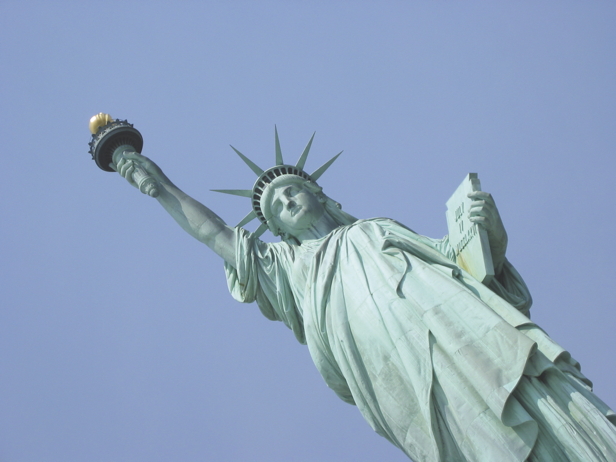 Constructed by the French, the Statue of Liberty was designed as a colossal copper statue. Gustave Eiffel, the designer of the Eiffel Tower, was asked to build a massive iron pylon and a skeletal framework to act as the support for the sculpture. While remaining fixed to its steel frame, the structure was able to move in the wind – subsequently, wind speeds of 80 kilometres (50 miles) per hour have been recorded, and the statue has been known to sway up to eight centimetres (three inches) under pressure.
Constructed by the French, the Statue of Liberty was designed as a colossal copper statue. Gustave Eiffel, the designer of the Eiffel Tower, was asked to build a massive iron pylon and a skeletal framework to act as the support for the sculpture. While remaining fixed to its steel frame, the structure was able to move in the wind – subsequently, wind speeds of 80 kilometres (50 miles) per hour have been recorded, and the statue has been known to sway up to eight centimetres (three inches) under pressure.
The pedestal, crafted from Scottish sandstone, was built in the USA. Once this was erected, it was time to assemble the statue proper. Parts of the statue were shipped from France. They arrived in 350 pieces and were packed into 214 crates. It took four months to assemble the statue and secure it on the pedestal. The pedestal is supported by two sets of iron girders which are connected by iron tie beams – these extend upwards into the framework of the statue creating a strong link from the ground. The Statue of Liberty was originally designed as a lighthouse and functioned as such from 1886 to 1902. It housed an electric light that could be seen several miles out to sea.
